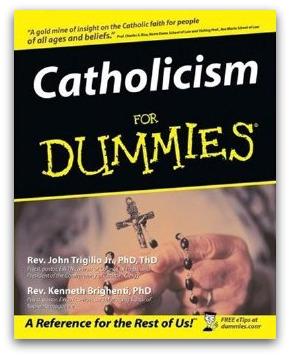By Paul Collins
Eureka Street
October 11, 2010
http://www.eurekastreet.com.au/article.aspx?aeid=23604
 |
Geoffrey Robertson may be a celebrity QC, but historian he is certainly not.
In his book The Case of the Pope and recently at Sydney's Festival of Dangerous Ideas, he touts the notion that the Vatican is not a real state and that as a consequence Benedict XVI should not be granted immunity from prosecution. Therefore he can be put on trial for his alleged responsibility in covering up clerical sexual abuse.
While to insiders it is obvious Robertson doesn't understand how the Church works (he even cites Catholicism for Dummies as one of his reference sources), I completely concede that Catholicism has a massive problem with sexual abuse and its cover-up.
Some Catholics, of course, have been saying exactly that for years. We know Catholicism faces a massive institutional problem, exacerbated by clericalism, and needs a radically new approach to Church government. But this will be achieved by committed Catholics, not articulate QCs.
In fact Robertson's boots and all approach diverts attention from the real issues. He focuses on what he calls the 'pernicious doctrine' of sovereignty, that is the legal inhibition that prevents states from interfering in the internal affairs of other states.
But first, let's get a bit of history straight. The Holy See is the oldest state in Europe. The popes first administered Rome during the collapse of the Western Roman Empire in the fifth century. Then in the 680s several able popes were obliged to take political leadership in the protection of central Italy. This led to an independence movement that resulted in the formation of the respublica Sancti Petri, the forerunner of the Papal States. This was later recognised by Pepin the Short, Charlemagne's father.
The Papal States survived as a geographical and legal entity until 1870 when Rome was absorbed into the Kingdom of Italy. The popes never surrendered their territorial claim and in the three Lateran Treaties, a series of agreements between Mussolini's Italy and the Vatican Secretary of State, Pietro Casparri, the Holy See was recognised as a sovereign entity with a tiny territory, the Vatican City State.
Australia recognises the sovereignty of the Holy See. The Department of Foreign Affairs and Trade in its 'Holy See Country Brief' correctly defines the Holy See as 'the central government of the Catholic Church'. It says that 'The Vatican City State was established … [to provide] the Holy See with a small territorial base and consequent recognition as an independent sovereign entity in international law.'
The DFAT Brief says that the Holy See maintains diplomatic relations with 176 countries (Australia has relations with 127) and that all Vatican territory is protected as a world cultural heritage site.
Essentially Robertson's attack on the papacy emanates from his preoccupation with limiting state sovereignty so that his particular notion of human rights can be enforced worldwide, and tyrants like Saddam Hussein (Robertson supported the bombing of Iraq) can be brought before the courts.
He sees himself as engaging in a kind of 'tyranicide' who ranges across the world overthrowing 'evildoers' and bringing them to justice, like his Puritan hero John Cooke who prosecuted King Charles I in 1649 leading to the monarch's execution. Perhaps, like the regicide Cooke, Robertson sees himself as a kind of 'papacide'?
His ignorance of how the church works is revealed in his attack on Benedict XVI. He says that widespread sexual abuse happened 'because Joseph Ratzinger, both as head of the CDF and as Pope, has insisted for the past 30 years that all such cases be dealt with in secrecy under canon law' — a legal system Robertson derides — instead of reporting abusers to the local police.
The facts are, as New Zealand canonist Brendan Daly showed last year in the periodical Compass, bishops found that using the 1983 Code of Canon Law was inadequate to deal with the abuse scenario they faced. They decided 'that using the canonical law and process was too complicated and difficult, and so they simply made no attempt to use the provisions of penal law that existed'.
While theoretically sexual abuse had fallen within the competence of Holy Office since 1962, bishops ignored that provision. It was not until 2001 that Ratzinger's CDF was given full supervision over complaints of sexual abuse. So if anyone is to blame it is local bishops.
Once he understood the extent of the problem Ratzinger as Pope moved quickly. An example is the Mexican priest-psychopath, Marcial Maciel. In 2003 I was told by an official of the CDF that they believed a case had been made against Maciel. But he had strong support in the Vatican and was a friend of John Paul II, so the CDF was hamstrung.
As soon as he became Pope, Benedict XVI moved to deal with this serial abuser. Yes, he should have been handed over to the police, but apparently none were actually after him.
It seems to me that Robertson QC is more interested in his own sovereignty agenda than the actual pursuit of justice for victims.
Any original material on these pages is copyright © BishopAccountability.org 2004. Reproduce freely with attribution.